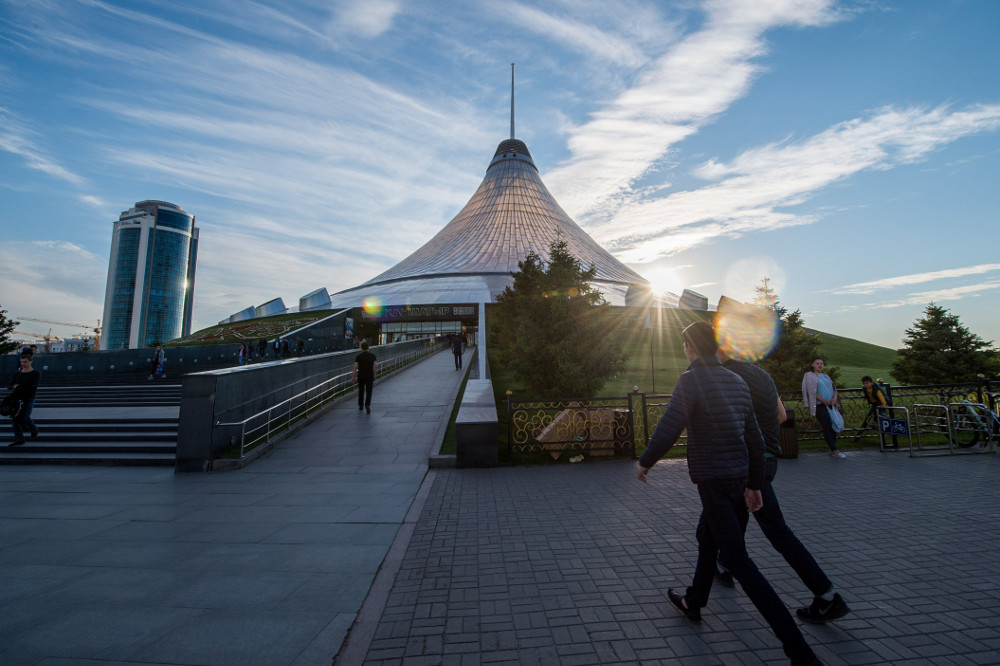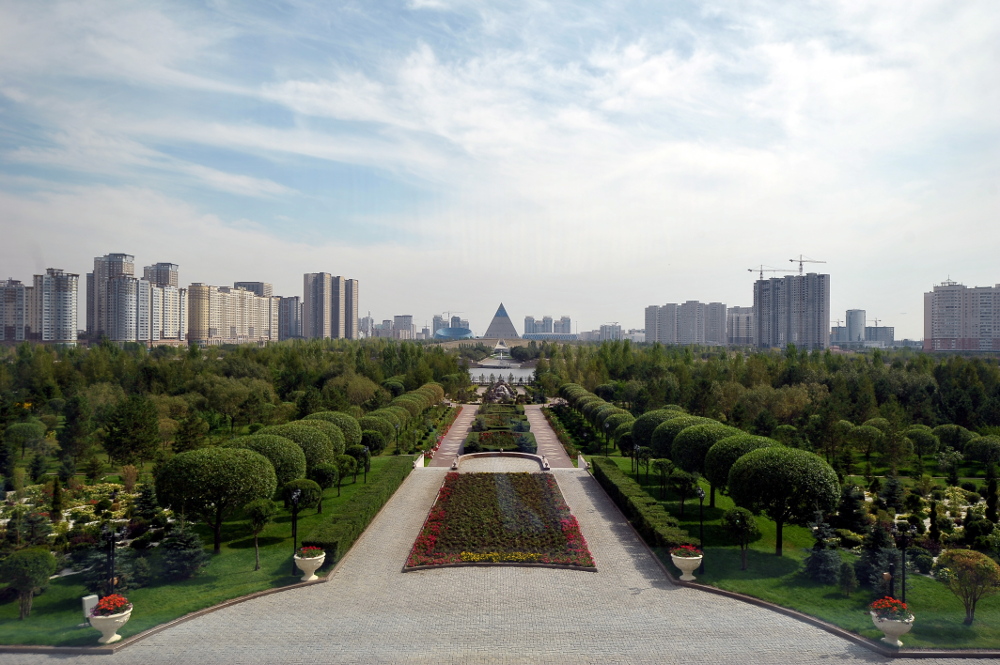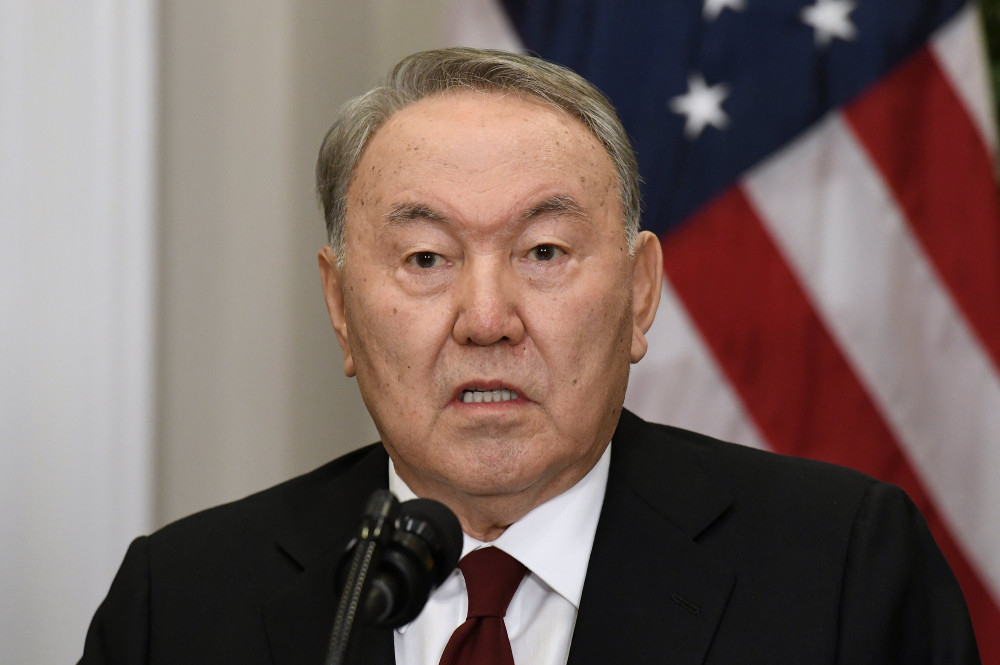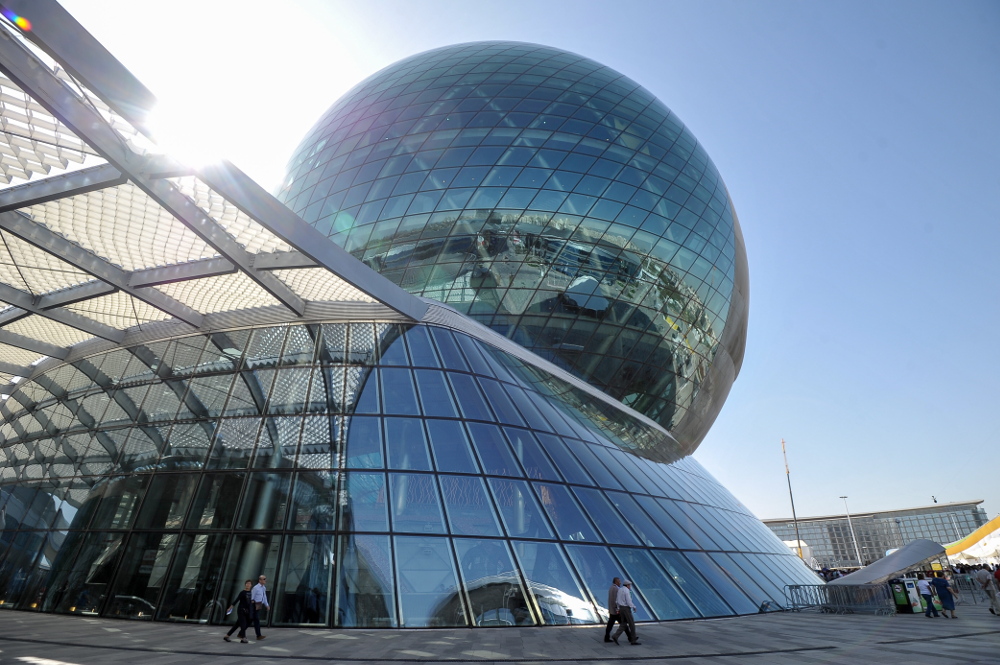THE WARSAW INSTITUTE REVIEW
Date: 12 March 2018 Author: Piotr Kościński
Kazakhstan: An “Inhuman Land” Increasingly Human
When in 1936, Poles from Soviet Ukraine, and later from the areas of eastern Poland seized by the USSR during World War II, were deported to Kazakhstan; they called this country the “inhuman land.” Today, while repatriations back to Poland are being organized on the basis of a new law, Kazakhstan is changing for the better and living there is increasingly easy.

From 1935, the authorities in Moscow shut down almost all institutions in the Soviet Union tied to the Polish minority, especially those in Belarus and Ukraine: schools, libraries and newspapers, as well as two Polish national regions. In 1936, large-scale resettlements of Poles from the broad border region of Soviet Ukraine took place. What was the reason? First of all, the attempt to indoctrinate the Polish minority failed. Poles did not want to join the Communist Party and collective farms, they also reacted negatively to churches being closed and the arrest of priests. After the deportations (1937–1938) the so-called Polish Operation of the NKVD took place, during which 111,000 Poles were arrested under falsified charges and killed.
Professor Henryk Stroński (University of Warmia and Mazury), a historian dealing with the history of the Polish population in Ukraine, estimates the number of people forcibly sent to Kazakhstan at 60,000 (Germans were also expelled from the border area).[1] They were sent mainly to northern and central Kazakhstan.
The deportees were dropped off on the steppe and ordered to build villages. And so, about one-hundred kilometers west of the Kazakh capital of Astana, “toczki” (points) were created, that were separated from one another by several kilometers: 10 – later named Kamianka, 11 – Kamyszenka, 12 – Pierwomajka, 13 – Łozowoje, 14 – Priiszymka.[2] In the north, Oziornoje, Jasna Polana, Zielony Gaj and other settlements were established. The deportees first built tents and dugouts, then houses from saman (dried clay bricks). They could not leave their villages and they remained under special supervision until the 1950s.
After the Soviet attack on Poland on September 17, 1939, thousands more people were deported from the seized areas of eastern Poland to Kazakhstan (the republic itself became a giant prison for the entire USSR). Of the survivors, most of them managed to return to Poland after the war. Only a small number of those deported in 1936 returned to Ukraine. After Kazakhstan gained independence, several thousand Poles left for Poland and Russia, where relocation was relatively easy. Currently, there are still over 30,000 Poles in Kazakhstan. This, among other reasons, is why the Central Asian republic is important for Poland. Kazakhstan also remains an important player in both the post-Soviet sphere and throughout Asia.
Rich Astana
Arriving in Astana (in Kazakh the name means “capital”) one might get the impression that they have arrived in one of the richest countries in the world. It is true that in the old part of the city there are still some quite provincial streets, but old Astana, formerly known as Akmoly (from Akmola – in Kazakh “a white grave”), Tselinograd (from Russian – “city on fallow land”) and finally Akmola, with its multi-story Soviet style houses, is now the less important part of the city. A completely new cityscape, located mostly to the south of the Ishim River, dominates the capital.
One of the symbols of the Kazakh capital is the huge Khan Shatyr (“Royal Marquee”) Entertainment Center, with an area of 127,000 square meters and a height of 150 meters, where, in addition to numerous shops and restaurants, there is also a monorail and a beach with sand imported from the Maldives. The Khan Shatyr is at the end of the axis on which the Bayterek (in Kazakh – “Topola”) Tower monument is located, the symbol of the city, meant to embody the Kazakh folk tale about the mythical tree of life and the magical bird of happiness. At the other end of the axis is the huge presidential palace, surrounded by various government facilities.

Moving away from this new city center to the south along Qabanbay Batyr Avenue, we reach the vast headquarters of the University of Nazarbayev, founded in 2010 and a symbol of the development of education in the country. Opposite it is another giant shopping and entertainment center, Mega Silk Way, whose roof and walls are covered with a special material resistant to temperatures down to minus fifty degrees Celsius. This facility is even bigger than Khan Shatyr with an area of 140,000 square meters and half a kilometer long. Behind it is the unusual and futuristic Expo 2017 complex. In buildings covering an area of twenty-five hectares, over one-hundred countries, including Poland, staged exhibitions from June 10 until September 10, 2017. Dedicated to the energy industry of the future, the Expo was unquestionably a great success: there were two and half million visitors; thanks to the exhibition, the number of hotels and hostels in the city increased by twenty-seven percent, and 200,000 people were employed in the construction of exhibition facilities. It is estimated that revenues to the city budget from hotels and restaurants increased up to two and a half times in the three-month period of the Expo.[3]
Oil Decides
Astana’s rapid expansion was possible only thanks to the economy. Kazakhstan has been developing rapidly for years largely due to the sale of crude oil, which of course means a dependence on its global prices. After a difficult period in 2015–2016, when GDP only grew at 1.2 and 1.1 percent annually, there was a definite improvement in 2017. According to the World Bank, in the first nine months of 2017, GDP rose to 4.3 percent, compared to 0.4 percent in the same period in 2016.[4] The main growth factor is still oil, whose production in said period increased by 12.5 percent, especially thanks to the activation of the new Kashagan Field in October 2016. This deposit is located in the northern Caspian Sea, near the Kazakh city of Atyrau – it is estimated that it contains up to 10.5 billion tons of oil. Apart from the Kazakh KazMunaiGas, shares in the North Caspian Operating Company, which operates the field, are owned by Italians, French, Americans, British, Dutch, Chinese and Japanese.[5] Oil prices have also risen again (by twenty-four percent), which has helped the Kazakh economy.
The authorities in Astana are striving however to ensure that oil is not the only driving force of the country’s economy. They are aiming at the development of other sectors, including agriculture, as well as improving the trade deficit. As a result, GDP growth estimates for all of 2017 can be revised from 2.4 to 3.7 per cent, although in the long-term the increase is estimated at three percent annually. Much depends on the effects of structural and institutional reforms carried out under the so-called “100 specific steps”.

In 2015, President Nursultan Nazarbayev announced the implementation of five major reforms: creation of a modern and professional civil service, ensuring the rule of law, industrialization and economic growth, a unified nation for the future and transparency and accountability of the state.[6] He incorporated them into the already mentioned “one hundred steps”. In the section concerning economic matters, there is talk of the introduction of market-based land sales, optimization of tax and customs policies and procedures, gradual abandonment of the state monopoly on assessing design documentation, abandonment of old, Soviet norms for European standards, strengthening the institution of the business ombudsman to protect the interests of entrepreneurs and attracting strategic investors in several industries (e.g. road infrastructure and tourism, milk and meat production).[7]
To what extent are these plans being implemented? They are being met with unexpected obstacles, as discussed in the last section of this article. The privatization program is moving very slowly. In 2016, it was announced that within two years, many key, state-owned enterprises would be sold, while the state-owned “Samruk-Kazyna” sovereign wealth fund, would leave itself a blocking share of twenty-five percent plus one share and that fifty-one percent of shares must remain in the hands of Kazakh investors. However at the end of 2017,“Samruk-Kazyna” announced that preliminary work was still underway, and that privatization might begin in the second half of 2018. Among the companies prepared for this are Air Astana and Kazatomprom, an importer and exporter of uranium and other fuel components for nuclear power plants.[8] The Astana International Financial Center (located in buildings left after the Expo 2017), which is to co-organize privatization, is also just in the early stages of development. It is almost certain that the implementation of this very ambitious plan will take much longer than originally intended.
The Increasingly Modern Countryside
That said, the capital is just a fragment of Kazakhstan and it is enough to leave Astana and drive slightly away from the beautiful roads to see that it is different in the countryside. The first thing you will notice after leaving the expressways is the quality of the roads, which is simply terrible. According to the ranking prepared by the World Economic Forum, Kazakh roads rank 115 out of 137 countries assessed.[9] The “Road quality map”[10] is available online, and mainly shows highways and expressways connecting main cities. The villages, however, can be reached primarily by side roads that were once even covered with asphalt, but have fallen into total disrepair and can only be reliably traversed by off-road vehicles. Not only is the poor quality of materials to blame, but also long and very harsh winters, frosts with temperatures reaching minus forty-five degrees Celsius, snowstorms and spring thaws.
The countryside is changing very slowly, but it is changing. Nevertheless, the old houses remain as they were, although there are very few clay brick buildings left. The villages are usually very far apart, because there is plenty of room on the steppe. One-story houses dominate, surrounded by gardens where potatoes and vegetables are grown; taller buildings are very rare. What distinguishes these villages from European ones are the omnipresent electric poles. The cables that have disappeared underground in Europe hang high here, often crossing and creating strange, interwoven networks.
The main problem is still the weather. “The climate was once worse than now,” says the Akim (head of the village) of Pierwomajki, Vyacheslav Dembicki. “Now the temperature of minus thirty-five to forty-two degrees lasts only a week, and then it is only minus twenty-five. Once, a strong frost kept for months,” he adds. But winter in Kazakhstan lasts from September to May. In the remaining months there is a very short and intense summer. This means that agriculture, the basis of village functioning, can normally only exist for a few months. In the remaining period, cattle must be kept in heated barns.
After the collapse of the Soviet Union, kolkhozy (collective farms) and sovkhozy (state-owned farms) ceased to exist; if there were waterworks, usually they stopped working, if there was a sewage system, it also broke down. In Pierwomajka, the land of the kolkhoz was divided among former collective farmers, formally speaking, cooperators, and thus co-owners of the entire land. Later, the villagers leased it to a company owned by a private farmer, encompassing up to 30,000 hectares. In Europe this would be a gigantic farm. “Our farm can be profitable if it has at least two-thousand hectares of land,” emphasized Akim Dembicki.
In the countryside, schools and pre-schools have changed the most in recent times. You can see that the authorities have spent a lot of money. The school in Pierwomajka is renovated and clean, and there are free textbooks for every student in the library. The kindergarten, divided into five groups – four Polish age groups and one Kazakh – is also renovated and spotless. Each group has two rooms, in one are cots and in the other are chairs, tables and toys, and there is a separate playground outside. You can see that a lot of effort has been invested into the development of children and young people. If the countryside continues to change as much as the schools and pre-schools, then there will be fewer and fewer people willing to leave.
Authoritarianism in the Background
It should be remembered that politics in Kazakhstan are far different than in Europe, unless we compare it to Belarus. At present, supreme state power rests in the hands of the 77-year-old president Nursultan Nazarbayev, who was the first secretary of the local communist party in the USSR. Nazarbayev, however, is gradually reducing the scope of his power. In a nationwide TV message on January 25, 2017, he announced the transfer of some of his powers to the parliament and government. Kazakhstan is to become a parliamentary-cabinet republic, while the president is to become an arbiter, although he will continue to set foreign and defense policy for the country.
Even if implemented slowly, this change is very serious and has huge consequences. The Freedom House organization, dealing with human rights, defines the political system in the country as a “consolidated authoritarian regime” and on a scale from 1 (most democratic) to 7 (the least democratic) awarded Kazakhstan 6.64 points.[11] In turn, the Democracy Index in 2016 showed Kazakhstan in 139th place (out of 167), just behind Russia (134) and China (136), but ahead of Azerbaijan (148), Uzbekistan (158) and Turkmenistan (162).[12]
It must be remembered that in the lower house of parliament (Majilis) the president’s party, Nur Otan, has the majority, 84 out of 107 seats, while the “constructive opposition” Naghyz Ak Zhol and the communists have 7 each; this means that until there are changes in the party system, political changes will be more of a formality.

In December 2017, a miners’ strike was carried out in the mines belonging to ArcelorMittal. A few hundred of them stopped their work, demanding a thirty-percent wage hike. Besides this, last year was basically calm, unlike in 2016, when there were serious riots related to the government’s land privatization plans. Part of society was afraid that the possibility of selling land to foreigners meant that it would go to the Chinese.[13] Anti-Chinese sentiments flooded social media, often repeating the falsehood that a large part of Kazakhstan would be turned over to Chinese settlers. Hence the outbreak of riots in Atyrau and Aktobe in April. The government was forced to suspend its plans. Another wave of protests swept through in May. However, unlike in 2011 in Zhanaozen, where police killed fifteen people during the riots, police activities were relatively mild.[14]
The question is how much the planned changes might disturb the current, stable situation in Kazakhstan. The authoritarian rule of Nazarbayev has one positive effect: it provides stability. There are no ethnic disputes there, although “Kazakhization” is proceeding, for example, through the requirement for non-Kazakhs to learn the Kazakh language (planned alongside this is the replacement of Cyrillic with the Latin alphabet). There are no religious disputes, and although the dominant religion is Islam, Islamists are not a threat. According to the Global Terrorism Index, Kazakhstan is 94th in terms of threat (the lower, the safer), while Russia is 40th, the U.S. 36th, and neighboring Kyrgyzstan 84th.[15] For now, however, Kazakhstan is changing gradually and slowly, becoming a better place to live and definitely more human, than in the past.
[1] “Deportacje ludności polskiej do Kazachstanu w 1936 roku. Zarys historyczny”, Kancelaria Senatu RP, (2015), accessed January 8, 2018, http://senat.gov.pl/gfx/senat/pl/senatekspertyzy/3388/plik/oe-247_inter.pdf.
[2] P. Kościński, “Toczka 12 się zmienia”, Idziemy (nr 30, 2017).
[3] “EXPO 2017: the deferred economic effect”, EXPO 2017, (December 2017), accessed January 8, 2018, https://expo2017astana.com/en/page_id=2113&news_id=1898.
[4] “Kazakhstan’s Economy is Rising – It is Still All About Oil”, The World Bank, (December 14, 2017), accessed January 8, 2018, http://www.worldbank.org/en/country/kazakhstan/publication/economic-update-fall-2017.
[5] NCOC, (December 2017), accessed January 10, 2018, http://www.ncoc.kz/ru/ncoc/default.aspx.
[6] “Plan natsii – 100 shagov po realizatsii piati institutsionalnykh reform N. Nazarbayeva”, Kazinform, (May 20, 2015), accessed January 8, 2018, http://www.inform.kz/kz/plan-nacii-100-shagov-po-realizacii-pyati-institucional-nyh-reform-n-nazarbaeva_a2777943.
[7] Ibid.
[8] “Privatizatsiya natskompaniy Kazakhstana ozhet nachatsiya vo II polovinye 2018”, CA-portal, (November 16, 2017), accessed January 8, 2018, http://www.ca-portal.ru/article:38946.
[9] “Dorogi Kazachstana priznane odnimi iż khudshikh v mirie”, NUR KZ (November 1, 2017), accessed January 8, 2018, https://www.nur.kz/1663980-dorogi-kazakhstana-priznany-odnimi-iz.html.
[10] Autoturist.KZ o dorgakh i putyeshesviyakh, accessed January 9, 2018, http://autotourist.kz/index.php/routes.
[11] Kazakhstan Country Profile, Freedom House, 2018, accessed January 9, 2018, https://freedomhouse.org/report/nations-transit/2017/kazakhstan.
[12] Democracy Index 2016, accessed January 9, 2018, https://infographics.economist.com/2017/DemocracyIndex/.
[13] B. Pannier, Majlis Podcast: “Kazakhstan’s Protests, One Year Later”, Radio Free Europe/Radio Liberty (April 30, 2017), accessed January 9, 2018, https://www.rferl.org/a/qishloq-ovozi-kazakhstan-protests-one-year/28460322.html.
[14] E. Marat, “Kazakhstan had huge protests, but no violent crackdown. Here’s why”, Washingtoin Post, (June 6, 2016), accessed January 9, 2018, https://www.washingtonpost.com/news/monkey-cage/wp/2016/06/06/kazakhstan-had-big-protests-without-a-violent-crackdown-heres-why/?utm_term=.82398df1443e.
[15] Global Terrorism Index 2016, accessed January 9, 2018, http://economicsandpeace.org/wp-content/uploads/2016/11/Global-Terrorism-Index-2016.2.pdf.
All texts published by the Warsaw Institute Foundation may be disseminated on the condition that their origin is credited. Images may not be used without permission.














